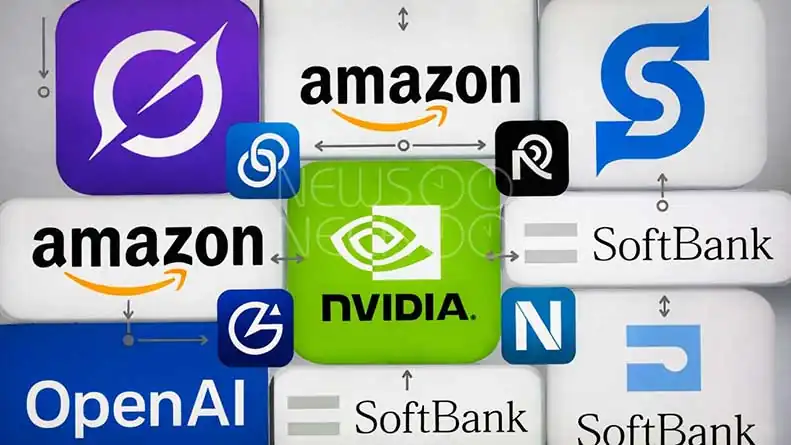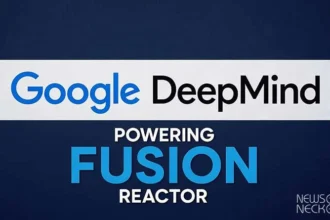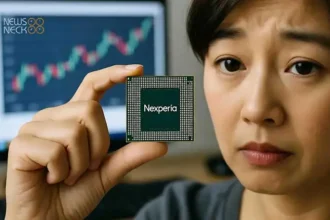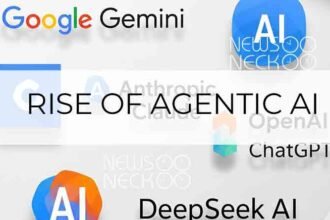Why Everyone’s Betting Billions on a Technology That Hasn’t Made Money Yet
Tech giants are pouring hundreds of billions into artificial intelligence. Some economists see echoes of a boom that ended badly before.
There’s a moment in every gold rush when the real money isn’t made by finding gold—it’s made by selling shovels.
Right now, we’re living through an AI gold rush. And the shovels? They’re computer chips. Tiny, incredibly complex semiconductors that power the machines learning to write essays, generate images, and maybe, someday, transform everything about how we work and live.
Samsung just raised the price of its memory chips by 60%. Not 6%. Sixty. And companies are still fighting each other to buy them.
That tells you something about the moment we’re in.
The Web They’re Weaving
To understand what’s happening in artificial intelligence right now, forget about the robots and the chatbots for a minute. Follow the money instead.
The money forms a web so tangled it’s hard to see where one company ends and another begins.
It started in July 2019, when Microsoft handed OpenAI—the company that would later create ChatGPT—a cool $1 billion. That seemed like a lot at the time. Then, in January 2023, Microsoft came back with roughly $14 billion more. OpenAI became dependent on Microsoft’s cloud computing services, and Microsoft became OpenAI’s exclusive cloud provider. They were now tied together, for better or worse.
Meanwhile, Amazon was making its own moves. In September 2023, the retail giant invested up to $4 billion in Anthropic, a competitor to OpenAI. Then, just last month, Amazon doubled down with another $4 billion. Google had already put $2 billion into Anthropic back in October 2023, then added another billion earlier this year.
And it gets messier. SoftBank, the Japanese investment giant, helped lead OpenAI’s massive $40 billion funding round this year. In August, they poured $2 billion into Nvidia—the company that makes the chips everyone desperately needs. Then Nvidia turned around and invested $5 billion in Intel and $100 billion in OpenAI.
Are you keeping track? Because even the experts are starting to lose the thread.
A Story We’ve Heard Before
Some economists are looking at this web of investments and feeling a sense of déjà vu.
They remember the late 1990s, when the internet was going to change everything. Companies with nothing but a website and a dream were suddenly worth billions. Investors threw money at anything with “dot-com” in its name. Companies invested in each other, creating a circular flow of money that made everyone look successful on paper.
Until it all came crashing down in 2000.
The dot-com bubble burst spectacularly. Companies that had been valued at billions went to zero overnight. Fortunes evaporated. Ordinary people who’d invested their retirement savings lost everything.
Today’s AI investment landscape is starting to look similar. Companies investing in companies that invest in other companies. Money flowing in circles. Valuations that seem disconnected from actual profits.
Take CoreWeave, a company that provides computing power for AI. When it went public in March, its value shot up to nearly $67 billion. Its shares have jumped 221% in just six months. But CoreWeave doesn’t make AI—it just rents out the hardware to companies that do. Its success depends entirely on the AI boom continuing.
The Uncomfortable Truth
Here’s what should make everyone pause: Most of these AI investments aren’t making money.
Researchers at the Massachusetts Institute of Technology looked at 300 AI developments. They found that 95%—let that sink in—95% have not turned a profit. And this is after companies have collectively spent $400 billion chasing the AI dream.
Four. Hundred. Billion. Dollars.
That’s not Monopoly money. That’s real capital that could have built hospitals, funded schools, developed green energy, or simply been returned to investors who might have other ideas about what to do with it.
The Chip Shortage Reality
While the investment web grows more tangled, there’s one very real, very physical bottleneck: chips.
AI requires enormous amounts of computing power. That means data centers packed with specialized chips that can perform trillions of calculations per second. The demand is so intense that Samsung can raise prices by 60% and still can’t keep up with orders.
This is where the gold rush metaphor becomes literal. During the California Gold Rush of 1849, the people who got rich weren’t usually the miners—they were the folks selling pickaxes, shovels, and denim pants. A guy named Levi Strauss made a fortune without ever finding an ounce of gold.
Today, Samsung, Nvidia, and other chip makers are the ones selling shovels to AI prospectors. And unlike the AI companies themselves, the chip makers are actually turning a profit.
What Happens Next?
Nobody knows for sure whether AI will justify the hundreds of billions being invested. Maybe it will. Maybe ChatGPT and its competitors are just the beginning of a genuine revolution in how we work and create.
Or maybe we’re watching a bubble inflate in real time, with companies investing in each other’s dreams while the actual profits remain somewhere in the distant future.
The people making these investments aren’t stupid. They’re some of the smartest business minds in the world. But smart people can get caught up in manias too. When everyone around you is making bets, it feels reckless not to join in. When your competitors are investing billions, you worry about being left behind.
That’s how bubbles form. Not from stupidity, but from fear—fear of missing out on the next big thing.
The Human Cost
While tech executives move billions around like chess pieces, real people are affected. Pension funds are invested in these companies. Retirement accounts rise and fall with their stock prices. Employees dedicate their careers to technologies that might never generate the returns everyone expects.
And if the bubble bursts? The executives will land on their feet. They always do. It’s everyone else—the engineers, the workers, the ordinary investors—who pay the price.
Right now, the AI gold rush continues. The shovels are selling faster than ever. And everyone hopes they’re betting on gold, not fool’s gold.
Only time will tell which it is.
Analysis based on market data and investment reports as of November 2025.













